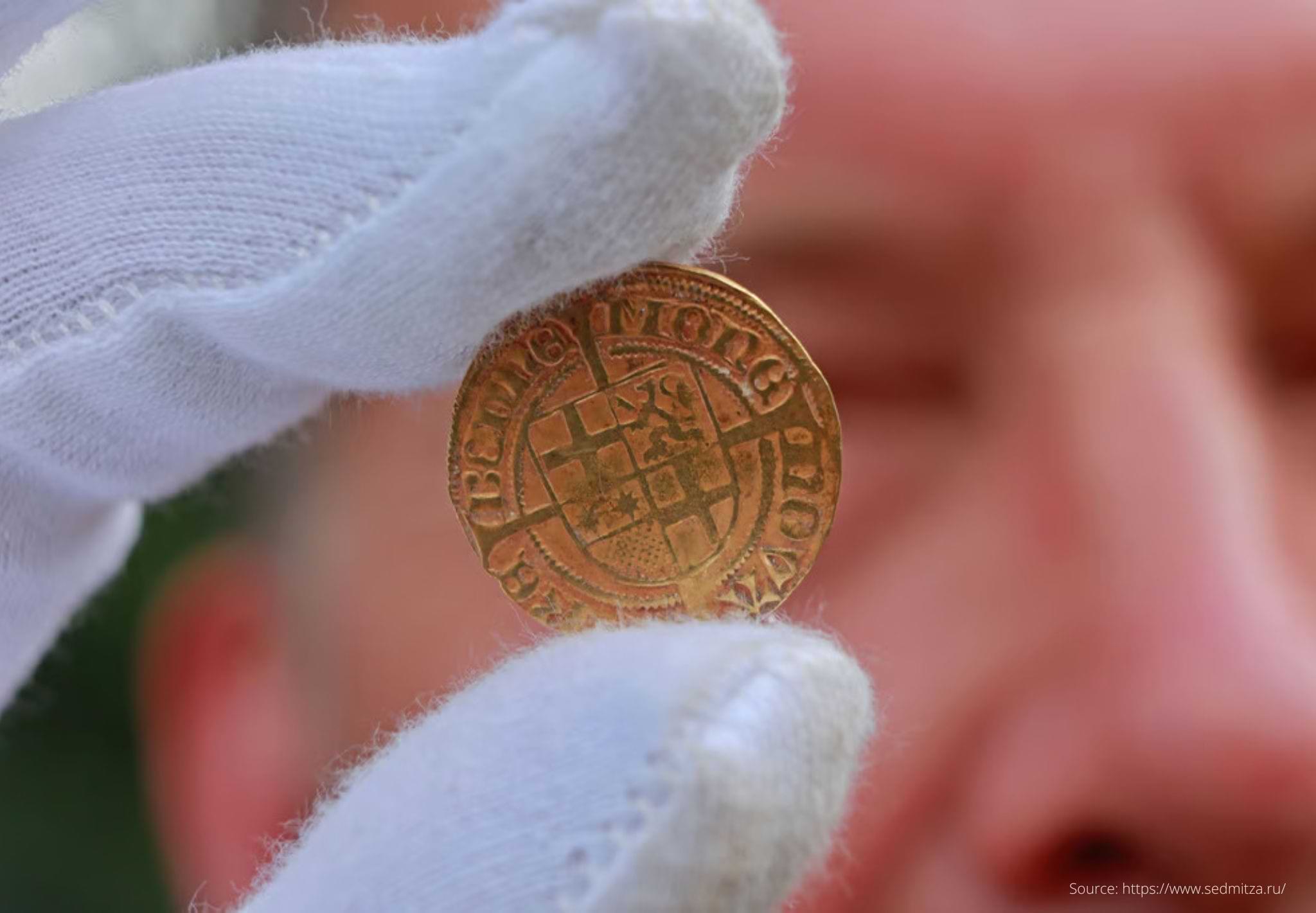
Treasury of coins in a German monastery
Average reading time — 3 minutes
A team of archaeologists discovered four 500-year-old gold coins during excavations at the ruins of the medieval Himmelpforte Monastery in the German city of Wernigerode. The diameter of the coins is slightly more than one inch (about 3 centimeters).

In the photo: one of the gold coins — all have lain in the ground for almost 500 years.
According to Prof. Felix Biermann, project manager and archaeologist at the State Office for Heritage Management and Archaeology Saxony-Anhalt, the discovered coins were most likely hidden by a monk during the peasants’ revolt in 1525.
The reason for the start of the Peasants’ War was the distrust of the population in the social structure and activities of the Catholic Church. The Protestant Reformation, initiated by Martin Luther, was the signal for rebellion. According to scientists, during the storming of the monastery by the peasants, the monk hid the gold coins, as the situation was very dangerous. Probably, the monk suffered a great deal, because he could not return the hidden money.
The discovered artifacts, also known as guilders, were used during the time of the Holy Roman Empire. One of the coins was minted during the reign of Frederick III (Holy Roman Emperor) in Frankfurt am Main before 1493. The second coin was issued between 1486 and 1495 in Schwabach, near Nuremberg. Two other guilders were made approximately in 1480-1481 in Bonn, a city in western Germany.

In the photo: in addition to coins, archaeologists have discovered a large number of artifacts dating back to the 13th-16th centuries. Among them: ceramics, animal bones, brass fasteners for books from the monastery library, a stylus for writing, a medieval cavalry spur, as well as lead labels that were attached to rolls of fabric for sale, and so on. All of these artifacts serve as a testament to large-scale trade and the prosperity of the community.
The monastery was founded before 1253 by the von Hartesrode family and was once inhabited by the Augustinian monks. In 1516, the Augustinian monk Martin Luther paid a visit there. During the Reformation, the buildings of the complex were abandoned and eventually destroyed.
Only a few ruins and a 1917 memorial dedicated to the visit of Martin Luther have survived to this day. Archaeologists were able to delineate the location of the monastery itself and its buildings thanks to the discovery of foundations. Based on geological studies, signs of artifacts preserved in the ground were revealed.
 In the photo: archaeologists are excavating the ruins of the medieval monastery.
In the photo: archaeologists are excavating the ruins of the medieval monastery.
Scientists continue research, meaning that many more valuable items can be found in this treasury of ancient artifacts and gold coins that will shed light on the medieval history of the region.
Read also the article:
Excavations in Poland: gold coins have been discovered





